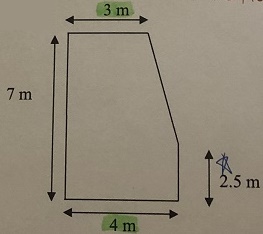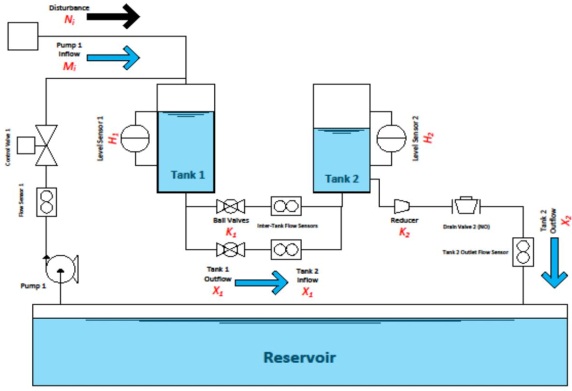Reference no: EM132281942
Project 1 - Part 1: Modelling of a practical dynamic system (i.e. coupled- tank system)
The Coupled Tanks System (Figure 1) emulates an engineering scenario where it is critical to maintain a desired fluid level. The coupled tanks system can have single or multiple inputs and outputs. Students are asked to characterise the behaviour of the system (find the transfer function of the plant). The rigs were designed to allow students to acquire data from a physical dynamic system to develop a simplified model of the underlying dynamics.

Once the model is developed in Assessment Task #1 (Project 1 - Part 1), students will be asked in Assessment Task #4 (Project 1 - Parts 2 & 3) to design controllers for the dynamic system and analyse the performance of the controllers in maintaining the water level in Tank 2.
Students are required to produce a report (by using the provided MATLAB Live Script template) detailing the following three tasks.
Task 1: Determine the Inputs and Outputs of 3 Key System Components
Using the calibration data ("Coupled_Tanks_Calibration_Data_2016-08-04.pdf"), produce the component block diagrams for:
• Sensor 2
• Valve 1
• Coupled tanks
clearly labelling the input and output, including units. Diagrams for each key system component should be similar in format to that presented below in Figure 2, with inputs and outputs fully defined (students need to simply edit the variables names in the MATLAB Live Script).

Task 2: Develop the Transfer Function of the Coupled Tanks System

Tank Dynamics and Properties Identification:
Mi = Tank 1 Flow Rate In
Ni = Disturbance to Tank 1 Flow Rate In (±)
X1 = Tank 1 Flow Rate Out = Tank 2 Flow Rate In
X2 = Tank 2 Flow Rate Out
K1 = Flow/ Head Constant (Flow Resistance Out Of Tank 1)
K2 = Flow/Head Constant (Flow Resistance Out 0 f Tank 2)
A1 = Tank 1 Cross Sectional Area
A2 = Tank 2 Cross Sectional Area
Tank Dynamic Equations:
Tank 1 Net Flow IN: M(t) + N(t)
Tank 1 Net Flow OUT: X1(t) = K1*H1(t)
Tank 2 Net Flow IN:X1(t)= K1*H1(t)
Tank 2 Net Flow OUT X2(t) = K2*H2(t)
Task 3: Discussion and Reflection
Provide an insightful and concise discussion on the validity of the methods used for acquiring and analysing the data, as well as on the validity of the conclusions made about the system characteristics. You should identify and discuss the underlying axioms for this work and comment on their validity.
Attachment:- Assignment task description.rar